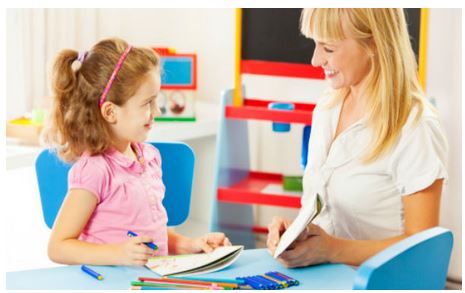Pediatric Therapy Corner Too: How Teachers and Therapists Work Together to Facilitate Self Regulation
[Source: The Friendship Circle]

It’s back to school time and that means changes in routine for many students with Autism, especially in Early Childhood special education settings. New federal/state regulations and service delivery mandates, budget cuts, and an increasing emphasis on behavior management means that teamwork and collaboration is in, and “pull out” individual therapy in a vacuum is out. New classrooms, new classmates, new teachers, new therapists, and new schedules can all be potential “triggers” that can cause behavioral issues.
“It Takes a Village…”
There’s a saying, “it takes a village to raise a child”. There is truth to this, especially when addressing noncompliance and self regulation in children with social communication deficits. Social communication proficiency is the cornerstone of civilization, characterized by the ability to self regulate i.e. transition from Me to We as needed.
This is a hard concept and skill for youngsters with Autism/special needs to grasp and master, due to underdeveloped Self Concept, Theory of Mind, and comprehension of time passing. This results in “meltdowns” due to fluctuating neuro-cognitive disorientation to person/place/time seen in many of these students. To counteract that, it in increasingly important that teachers and therapists collaborate on treatment.
The Three C’s of Behavior Management
Communicating with the child’s inner landscape to establish rapport
1. Get to know the child
Get to know the child’s likes and dislikes through play interaction first, to get an unbiased impression. Give the child the run of the room initially, in both class/therapy, for a short time, at regular intervals, to see what he/she is drawn to and what he/she avoids. Keep a list.
2. Gather Information
Peruse previous documentation, parental questionnaires (I like to create one to send home to each student’s parents at the end of the first day of school introducing myself, and asking for family photos and a list of favorite toys/snacks/topics of conversation/people etc.
3. Create a Social Story
Therapists can assist teachers in using arts & crafts and/or technology to create a visual, customized, cognitively correlated Social Story, “All About Me”, about the child’s known preferences and proper, more age appropriate responses to unwanted/unanticipated events. This Social Story will showcase targeted vocabulary and the items the child will likely receive/experience instead, in various settings.
Read the Rest of this Article on Friendship Circle.com
PediaStaff is Hiring!
All JobsPediaStaff hires pediatric and school-based professionals nationwide for contract assignments of 2 to 12 months. We also help clinics, hospitals, schools, and home health agencies to find and hire these professionals directly. We work with Speech-Language Pathologists, Occupational and Physical Therapists, School Psychologists, and others in pediatric therapy and education.
